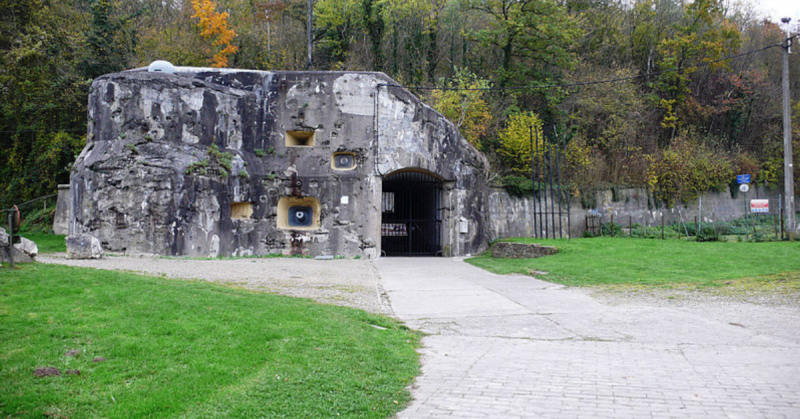On the 10th of May 1940, German armed forces invaded Belgium. One of their most challenging targets was Eben-Emael, a modern fort on the Albert Canal outside Liège. Here, German paratroops would achieve one of their most spectacular successes.
The Fortress at Eben-Emael
Built during the early 1930s, Eben-Emael was part of an extensive Belgian defensive system around the Albert Canal. This included four forts around Liège, substantial construction projects involving tunnel networks, raised cupolas, and reinforced concrete walls.
900 meters long by 700 wide, Eben-Emael was the largest of these forts. At the time of its completion in 1935, it was the largest concrete fortress in the world. It occupied a large hill with a commanding view across the canal.
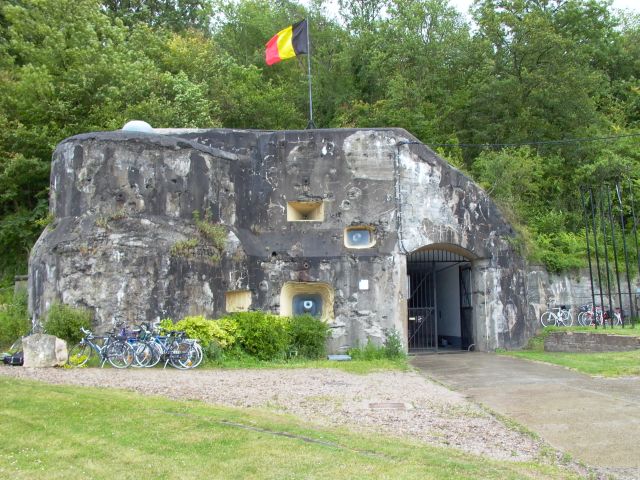
Its equipment included cannons, machine guns, and searchlights, as well as specialist anti tank and anti aircraft guns. It had its own sickbay, machine rooms, and barracks to hold its 1,200 man garrison, 1,000 men to operate the weapons, 200 in support and technical roles. Stores, tunnels, and a ventilation system meant that the fort could hold out even if cut off from the outside world.
Witzig’s Sappers
In the spring of 1940, Adolf Hitler was planning an invasion of Belgium. To succeed, the German armed forces would have to overcome Eben-Emael and take the bridges across the Albert Canal intact. This task was given to Captain Walter Koch, the head of the Koch Storm Detachment, an elite paratrooper unit. Koch assigned the assault on Eben-Emael to his sapper detachment, led by Lieutenant Rudolf Witzig.
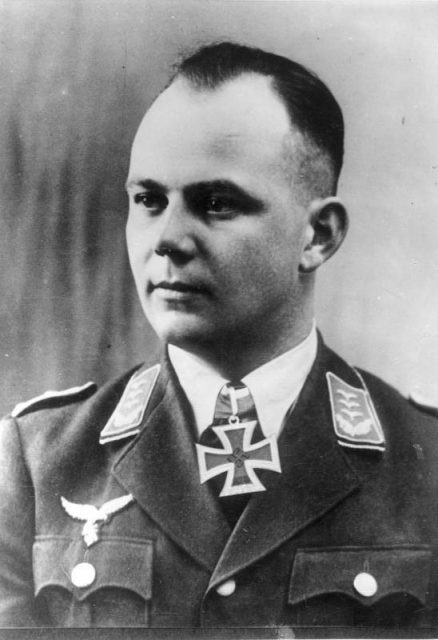
Born in 1916, Witzig had grown up during the economic depression that blighted Germany after the First World War. He joined the army at the age of 18, enlisting in a pioneer battalion. Three years later, he transferred as a pioneer to the Parachute Battalion, where he received training in airborne assaults and advanced military engineering techniques.
Academically gifted and an effective leader, Witzig was a natural choice for the assault on Eben-Emael.
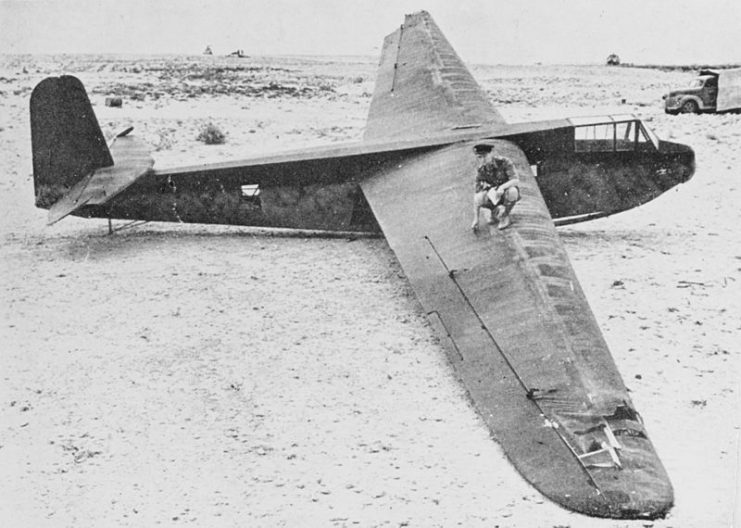
Preparing for Action
Witzig’s troops spent six months preparing for the operation. They practiced glider landings, as these would be used to drop the men and equipment on top of Eben-Emael, inside its outer defenses of walls, trenches, and canal embankment. After initial training at Hildesheim, they went to lands occupied by the Germans to make use of a captured fortification.
In the Sudetenland, an area of occupied Czechoslovakia, they practiced assaulting the defended fortification. In Poland, they carried out demolitions on defenses near Gleiwitz. Belgian deserters were brought in to be interrogated about the fortifications they would face. No effort was spared to ensure that the specialist troops were ready.
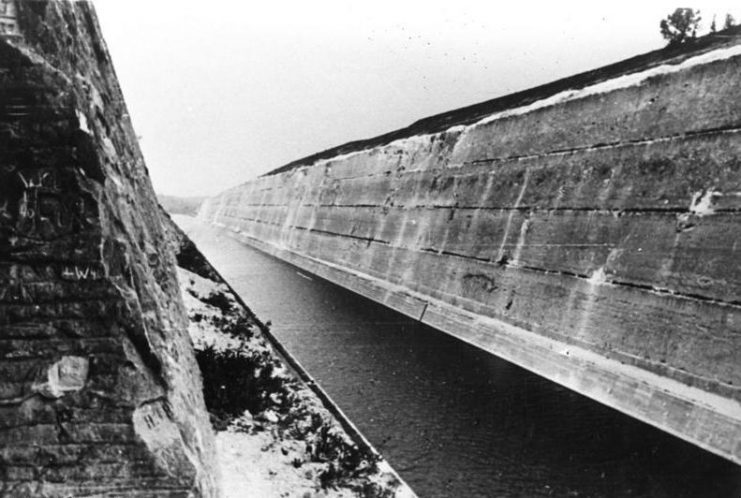
Preparations took place beneath a veil of strict secrecy. The men were not allowed out for R and R, were not granted leave, and not even allowed to mix with other German soldiers. They and their equipment were moved around covertly. Nothing could be allowed to hint to the Belgians at what was coming.
Flying In
At last, the time came. On the night of the 9th of May 1940, the sappers were loaded into eleven gliders. They took with them a range of specialist equipment, collapsible assault ladders, flamethrowers, cavity charges specially designed to blow holes in concrete fortifications were being used in action for the first time. There were only 85 men to take on a base holding hundreds, but they had been impeccably prepared.
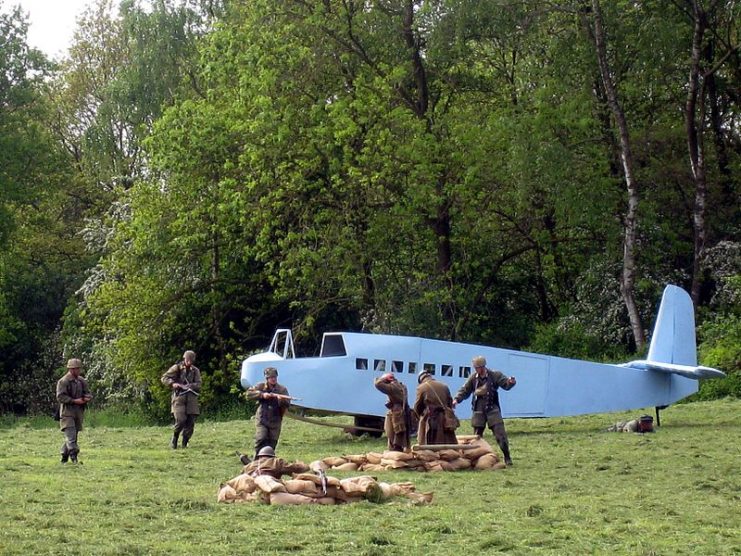
Also taking to the air were groups of uniformed dummies. Dropped by parachute west of the Albert Canal, they helped to distract the Belgians while the Germans crept in.
The gliders swept down toward Eben-Emael, landing five minutes before the rest of the army crossed the frontier. Two gliders, including the one carrying Witzig, hit difficulties and missed their landing. The rest landed on the roof of the fortress.
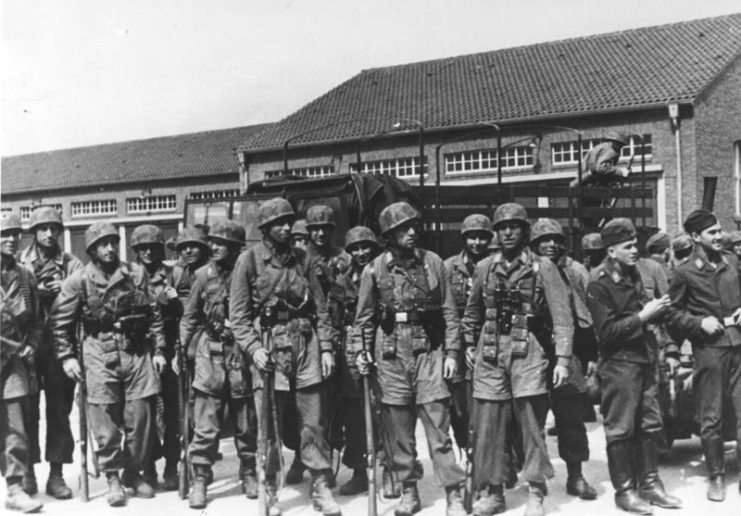
Taking the Fort
The first hour was crucial. In Witzig’s absence, Sergeant Major Wenzel took command and led the men in a frantic operation.
Two sections were sent to the northern area of the fort, where heavy resistance was expected. Instead, they found dummy defenses which distracted them from real targets during the initial attack.
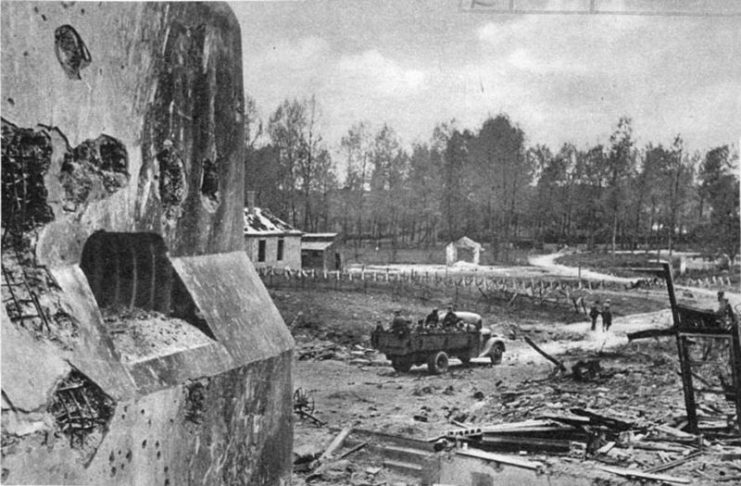
Meanwhile, the remaining 55 men assaulted infantry, artillery, and anti aircraft positions on the top of the fort. Armored domes and concrete casements were blown in with explosive charges, taking out the weapons they contained. Flamethrowers took out machine gunners.
Having found a new plane to tow his glider, Witzig arrived at the fort three hours later. By now, his men were onto the second stage of their attack. They reconnoitered the remaining Belgian defenses, blew open entrances, and started making attacks into the interior. Explosives were dropped down shafts in the fortress, to deadly effect.
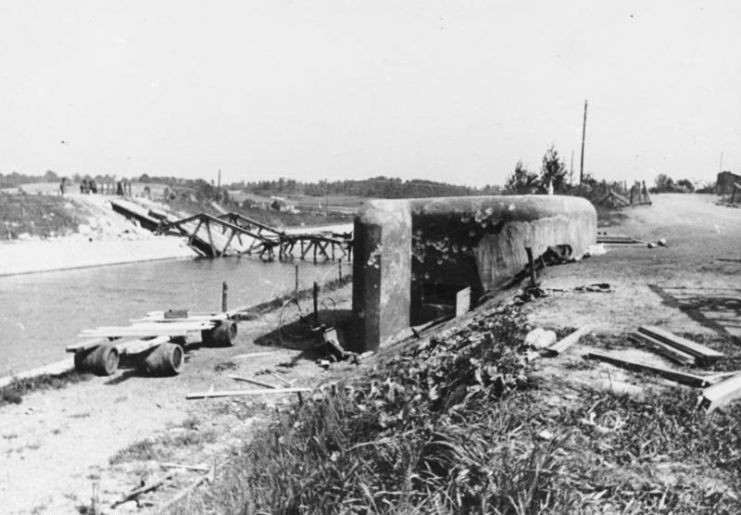
Early on the morning of the 11th, after a day of fighting, more German troops reached Eben-Emael. With their help, the paratroopers took out the remaining Belgian installations on the surface of the fort. Not long after, the garrison surrendered.
Why So Successful?
When Witzig’s men landed, there had been 750 Belgians in the fortress, ten times as many as the Germans in the initial landing. How had the Germans achieved such a success against superior numbers behind tough defenses?
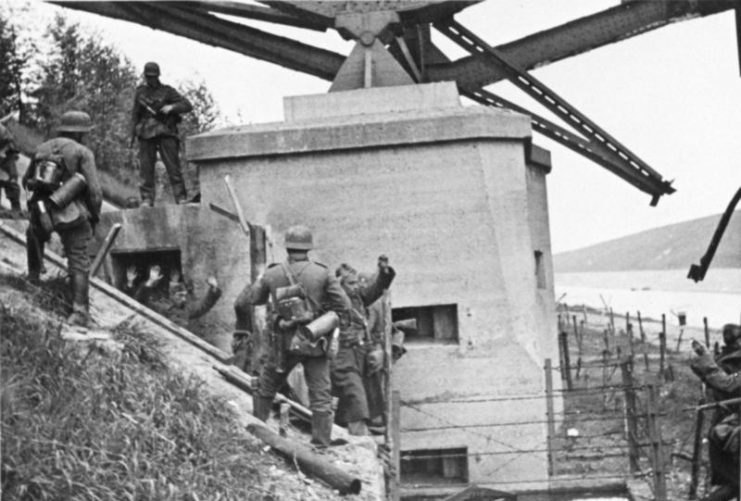
Read another story from us: German Special Forces of WWII – Brandenburgers
Writing 25 years later, Witzig himself put their success down to several factors. The defenses had key weaknesses which made life easier for the attackers. The element of surprise, so carefully fostered, gave the Germans an edge. The morale of the defenders, already weakened by Belgium’s attempts to stay neutral, was fatally compromised by feeling trapped inside the fort, afraid to go out and face such successful attackers in the open.
Eben-Emael was the first ever airborne sapper attack, a celebrated success for the German military and one that made Witzig’s career.
